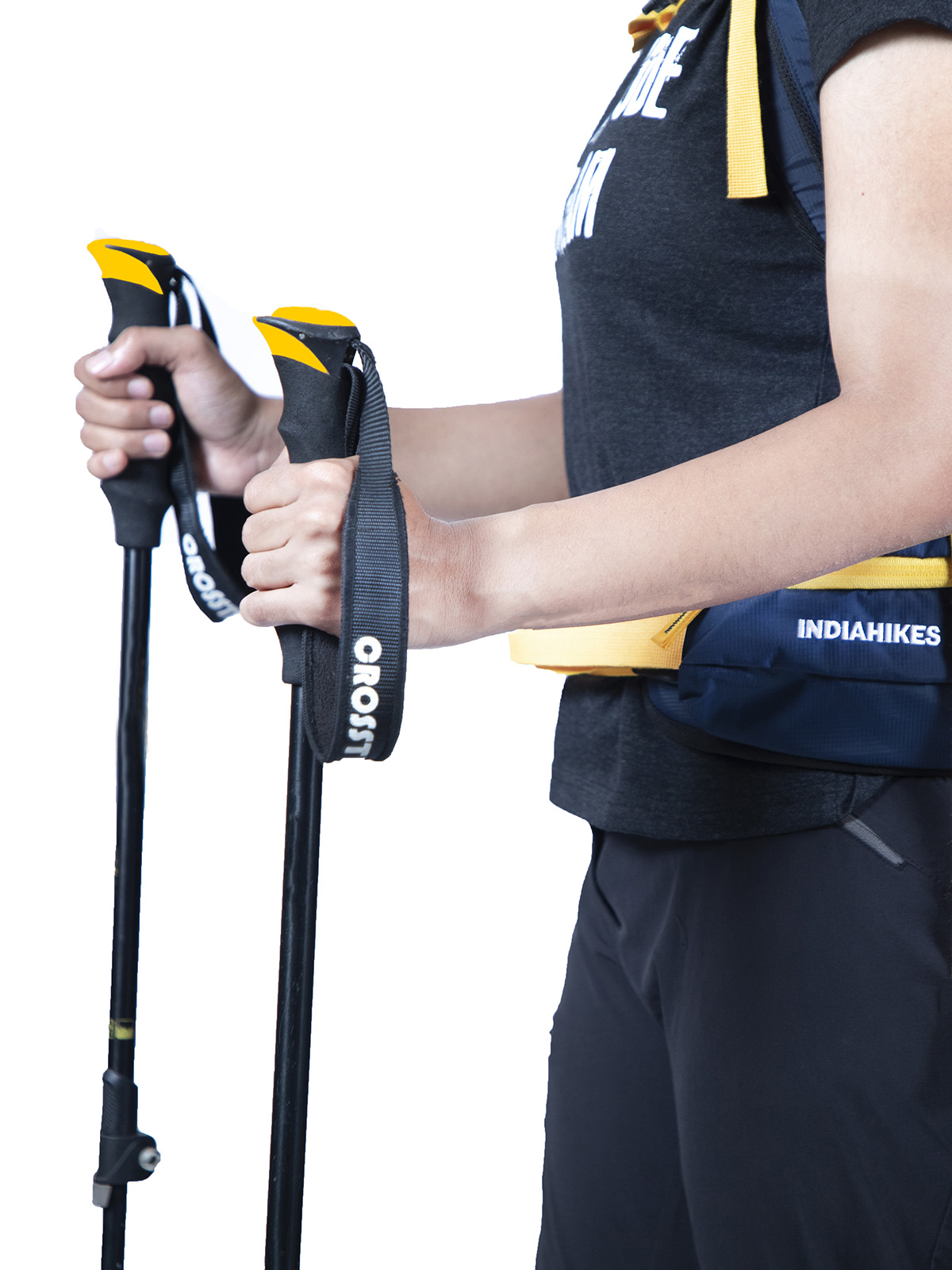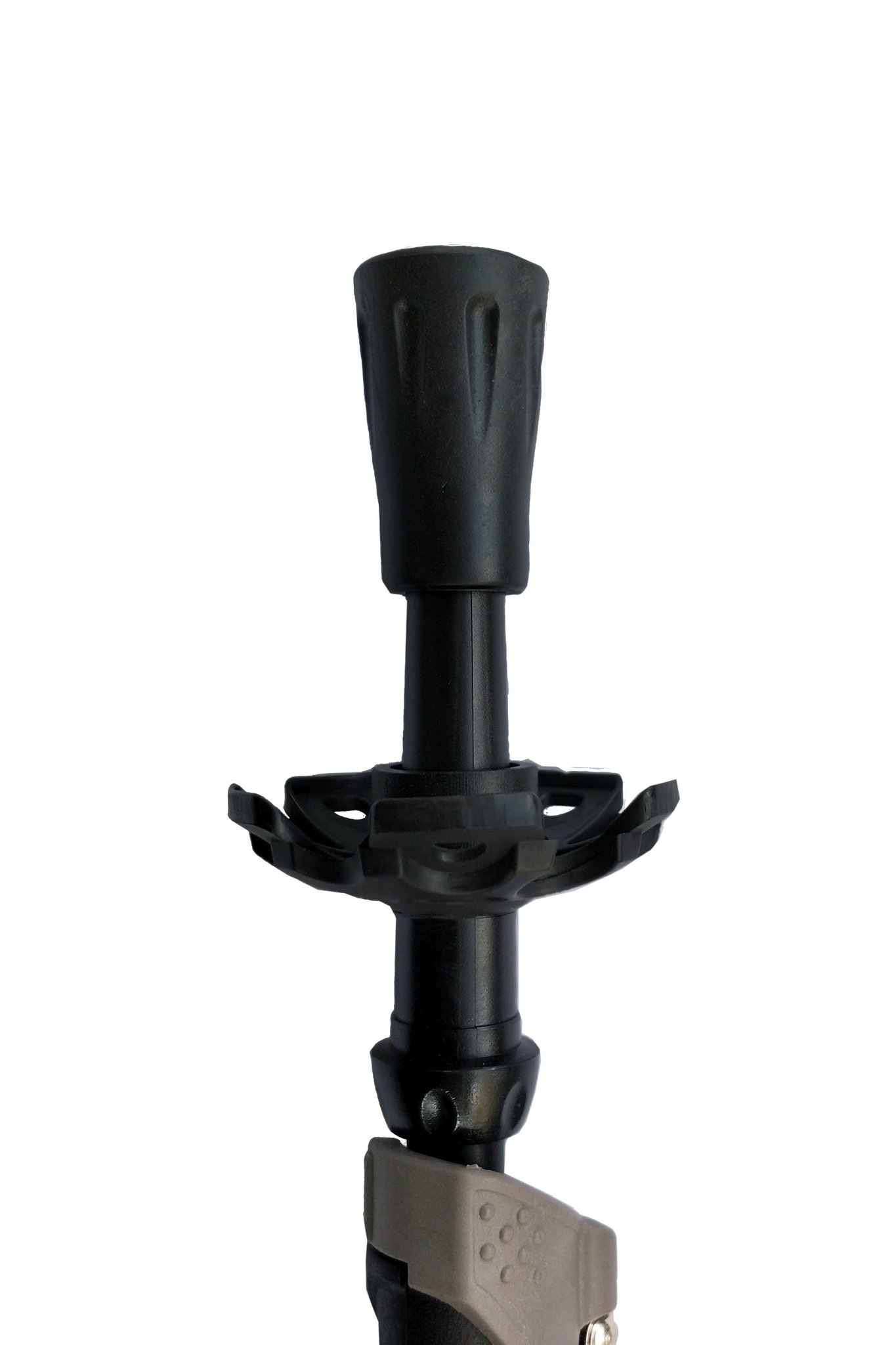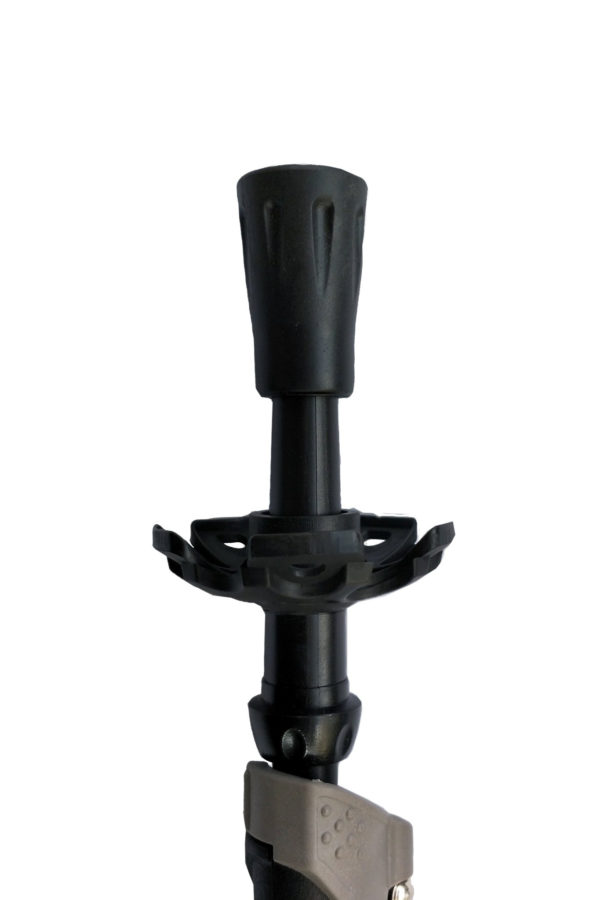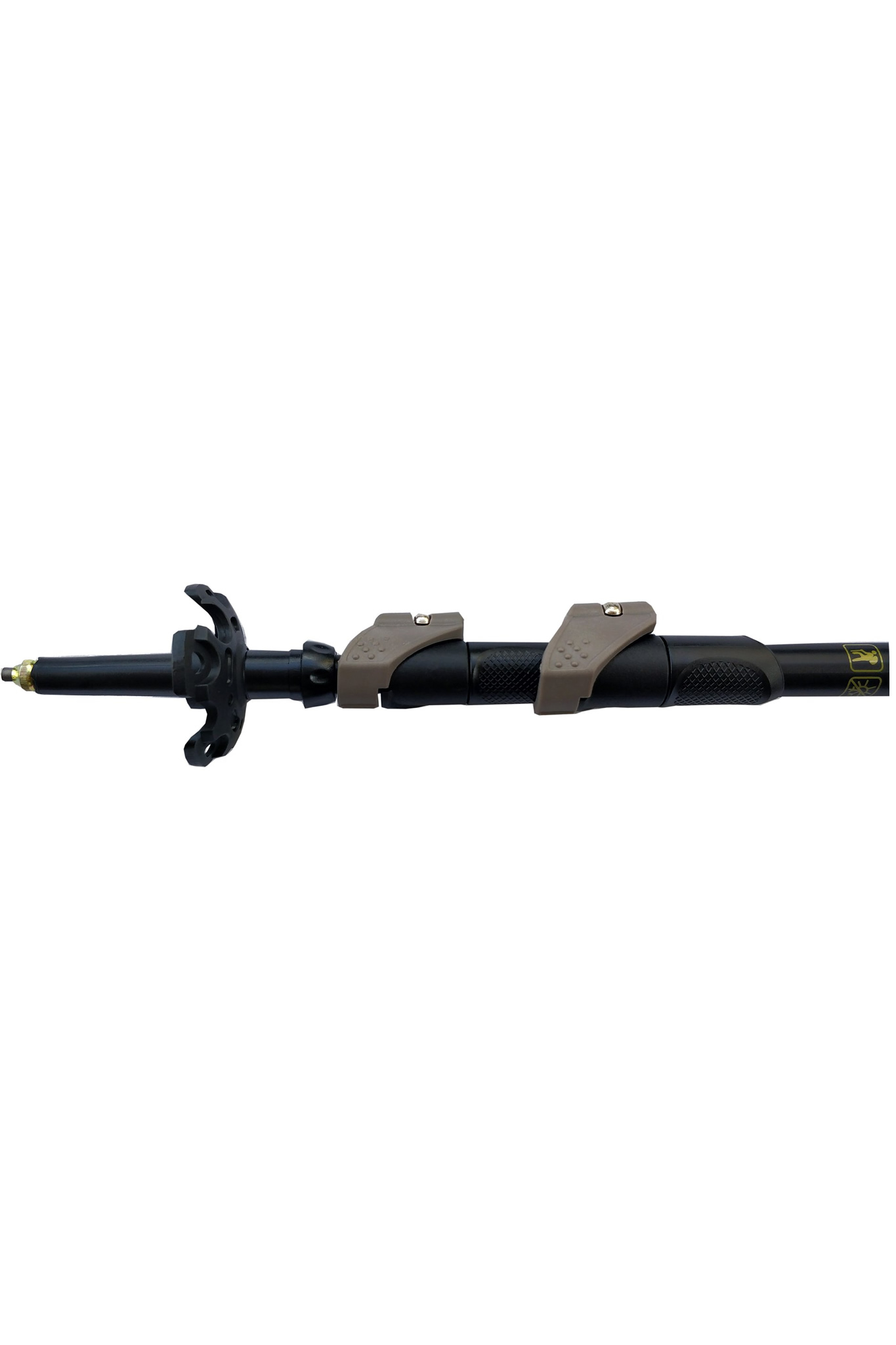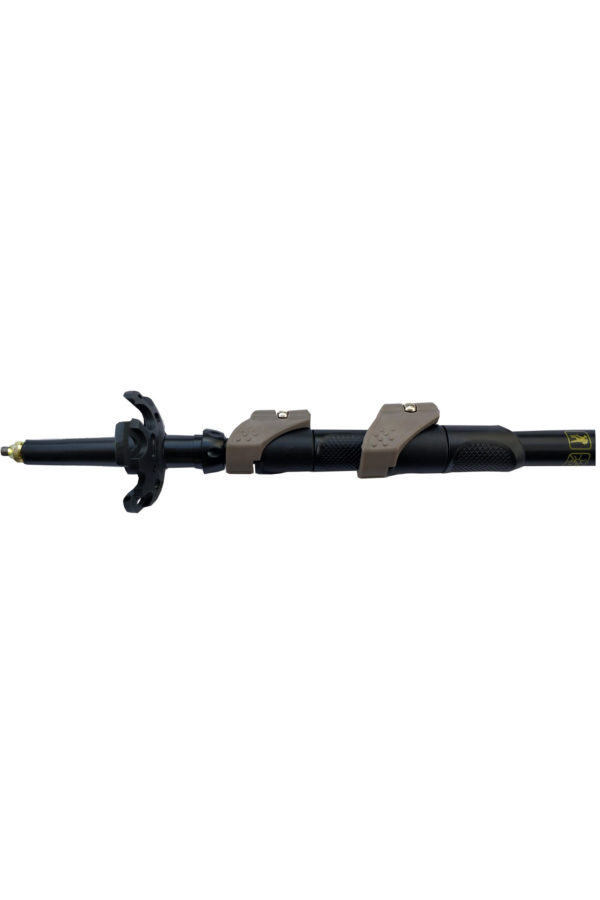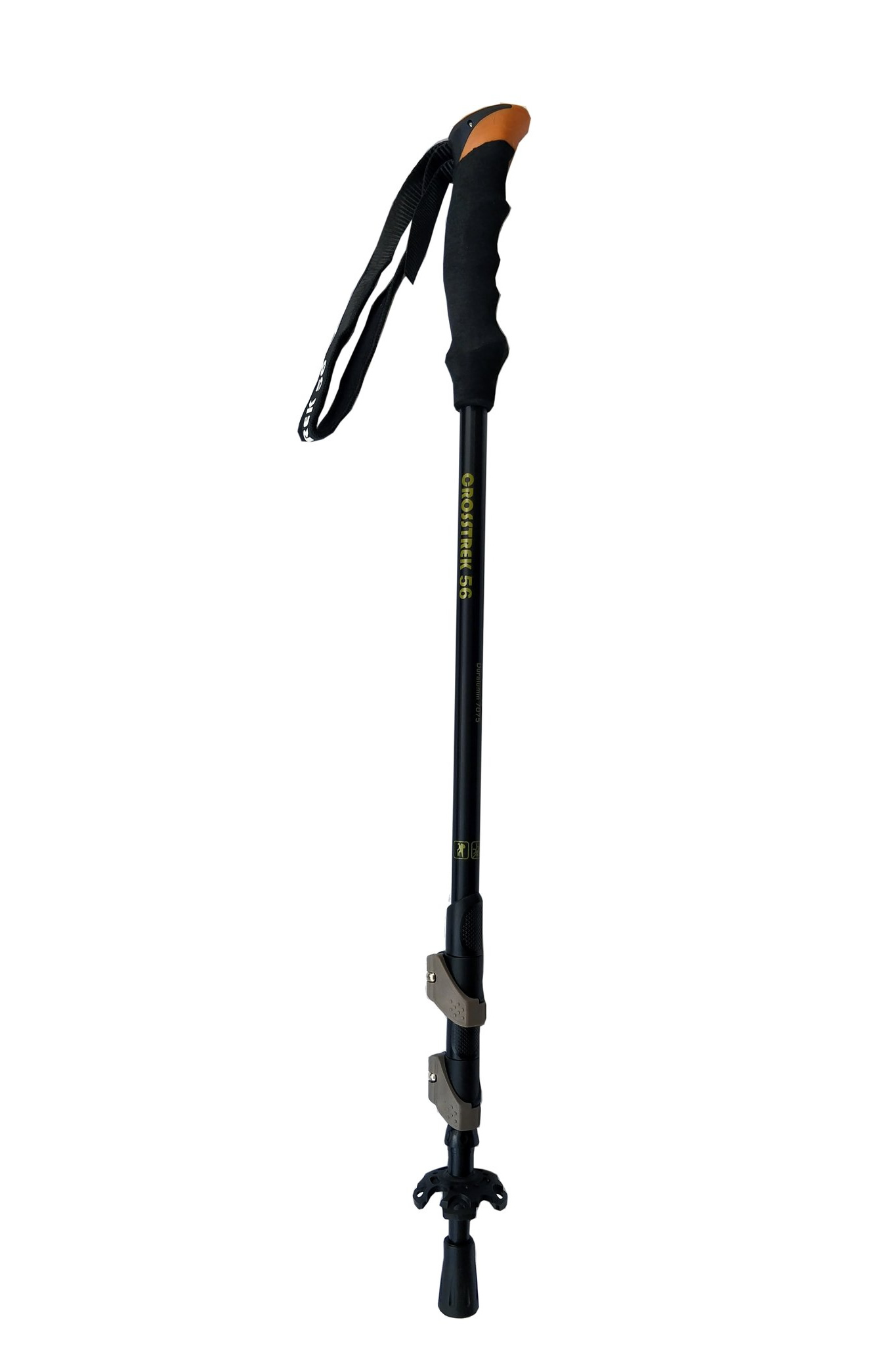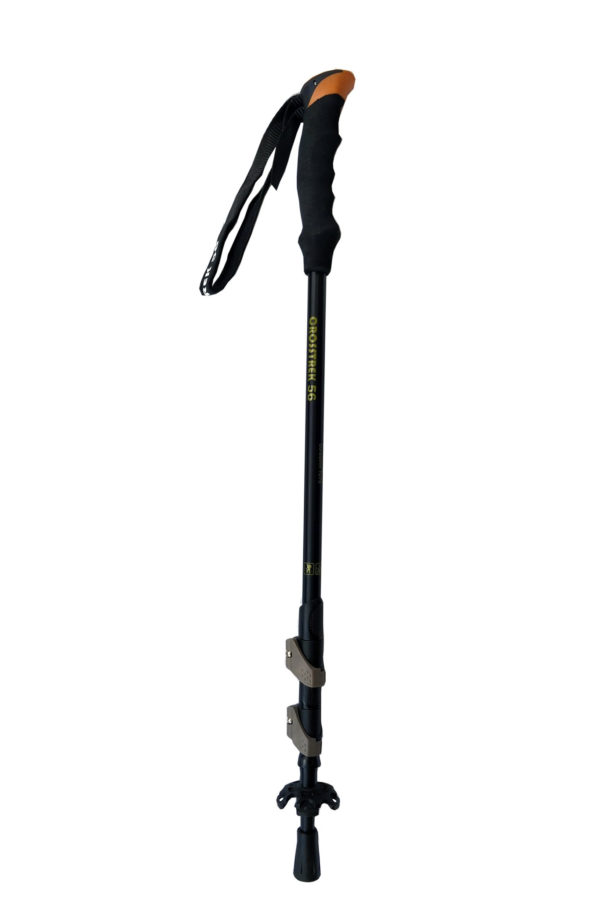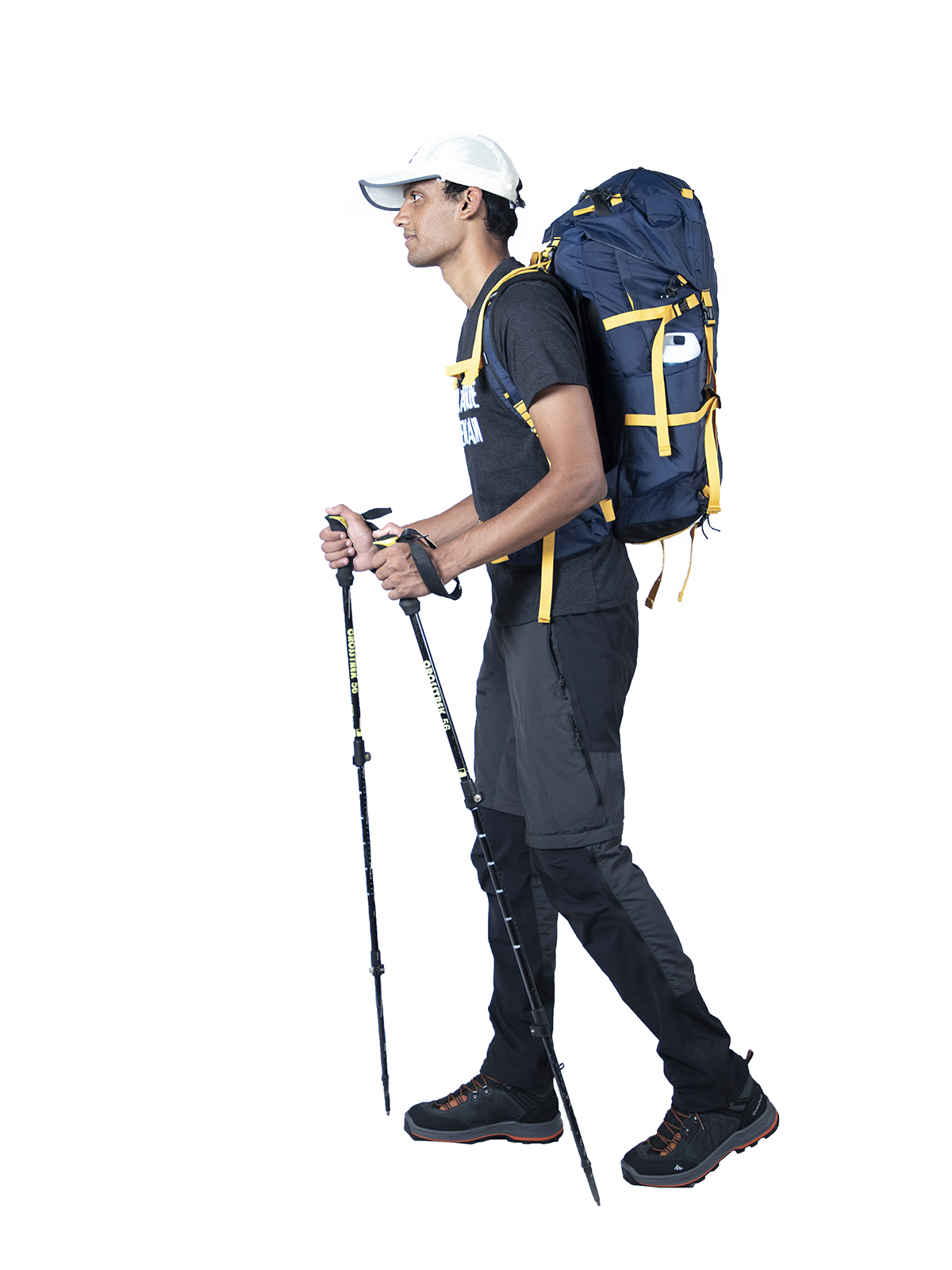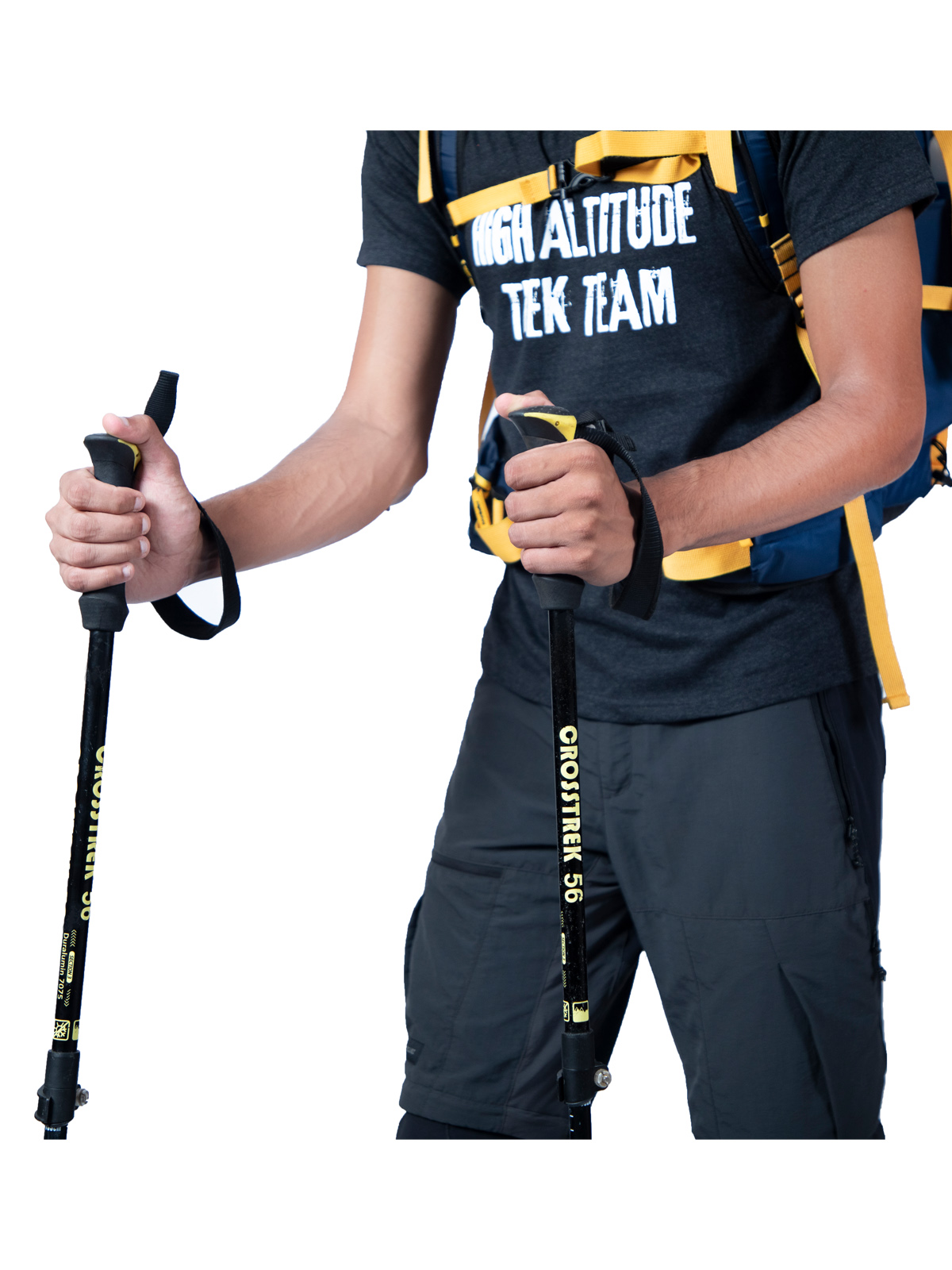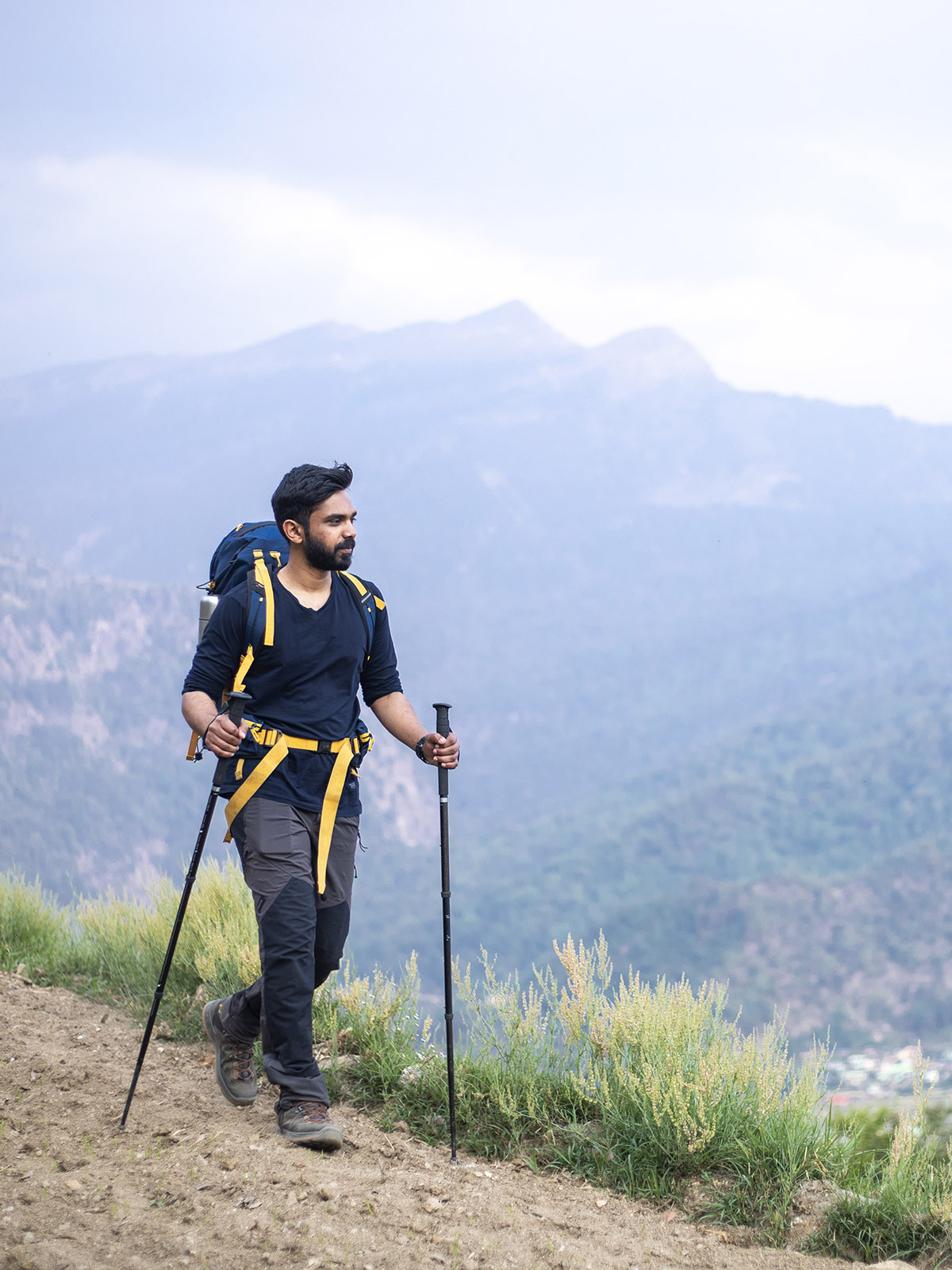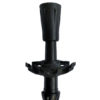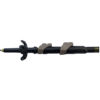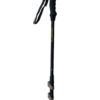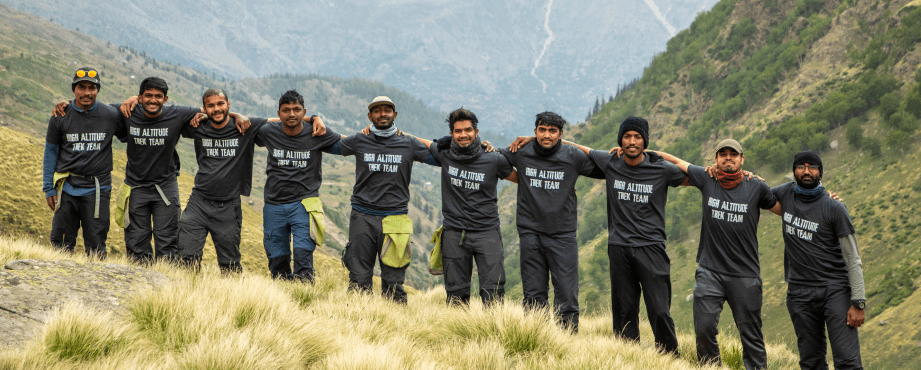A thorough check for any damages to the product
DEEP DIVE INTO WHAT MAKES THIS PRODUCT THE BEST OPTION FOR YOUR TREK
1) This pole has been specially designed by the Indiahikes team keeping in mind not just the use of it on trail but also easy carrying around when stoved in a rucksack. So when compressed, it is just as long as the average backpack and can be packed easily.
2) Long strap from the handle that comes around your wrist for extra grip.
3) Padded handle head for absorbing sweat during sunny or humid days.
4) Body made of the strongest grade of aluminum that makes it robust enough to handle your body weight without breaking/bending
5) Lightweight at 260 g. Doesn’t tire hand and doesn’t feel heavy on rucksack
6) Clip-locking mechanism for easy use. We have found it to be the most convenient locking mechanism for trek poles. It allows more flexibility with the length of the trek pole and is quick to operate.
7) Tungsten steel tip for good traction on snow and ice
Why do you need trekking poles on your trek?
Do trekking poles really make a difference? This is something several trekkers ask us. What they don’t realise is that walking on uneven terrain, and steep gradients can be a nightmare without trekking poles. It’s not a surprise that you see the most experienced trekkers and mountaineers using trekking poles in photos.
This is because three things happen when you use trekking poles:
1) You get immense balance and stability: While trekking, you’re mostly walking on uneven terrain and steep gradients. You’re either climbing uphill or downhill, on mud, rocky terrain, snow or ice. When this is the case, there are high chances of you taking a mis-step and losing your balance and stability. This can be incredibly dangerous when you’re walking on narrow trails with sheer drops on your side, which is the case most of the time in the Himalayas. This is where trekking poles come in handy. They immediately bring two extra limbs of balance and stability, ensuring that you straighten yourself out within seconds. The chances of you falling are cut down by a large percentage by just using two trekking poles.
2) Trekking poles conserve around 40% of your energy. When you see mountain dogs rushing past you on trails, you wonder how they climb with such ease. It makes a big difference that they have 4 limbs helping them up. This is what trekking poles do for you. They act as your third and fourth limb, conserving the energy exerted by your two legs by around 40%.
3)Trekking poles ease the load on your knees. This especially is handy when you’re descending. If you have any concerns with your knee, don’t even dream of trekking without poles. They give incredible support to your knees, making them as important as trekking shoes or pants on a trek.
